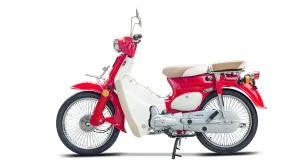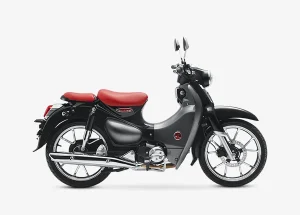In recent years, mopeds have experienced a significant resurgence in global markets. Once viewed as a niche form of transportation, mopeds are now seen as a practical, eco-friendly, and affordable solution to modern urban mobility challenges. Advancements in electric mobility are driving this rising trend, the growing demand for sustainable transportation options, and the role of both manufacturers and wholesalers in pushing mopeds into the mainstream. From the factory floors in China to the streets of Paris, mopeds are rapidly becoming a ubiquitous sight, reflecting a shift in transportation preferences worldwide.
The Global Moped Market: Key Players and Trends
The global moped market is witnessing rapid growth, and it’s not just limited to one region. From Europe to Asia, countries are embracing mopeds for various reasons. In 2023, the global moped market was valued at approximately $23 billion and is projected to grow at a compound annual growth rate (CAGR) of 5.7% from 2024 to 2030. Leading the charge are key markets like China, India, France, Italy, and the Netherlands.
China is by far the largest market for mopeds, particularly electric mopeds. Factories in cities like Shanghai, Guangzhou, and Shenzhen have ramped up production to meet both domestic and international demand. Companies like Yadea and Niu Technologies, two of the leading Chinese manufacturers, have dominated local markets and made significant inroads into European and North American markets. Yadea alone produced over 6 million electric mopeds in 2023, making it one of the largest players in the industry.
In Europe, mopeds have always had a strong foothold, but recent trends show a shift from traditional gasoline-powered models to electric ones. The European Union has been actively promoting sustainable transportation, with cities like Paris and Amsterdam leading the charge by offering subsidies and incentives for electric moped purchases. Italian manufacturer Piaggio, known for its iconic Vespa brand, has also embraced this trend, with electric versions of its scooters growing in popularity. In 2023, Piaggio reported that sales of its electric mopeds had increased by 22% compared to the previous year, signalling the growing demand for green alternatives.
The Role of Factories and Manufacturers in the Moped Revolution
At the heart of the moped boom are the factories and manufacturers that are driving innovation and efficiency. In regions like Southeast Asia, particularly Vietnam and Thailand, mopeds have been the go-to mode of transportation for decades due to their affordability and practicality in congested cities. However, with the rise of e-mobility, many local manufacturers are shifting to electric models, aligning with global environmental goals.
Take VinFast, a Vietnamese company that started as an electric car manufacturer but has quickly expanded into electric mopeds. By integrating high-tech assembly lines and collaborating with European design firms, VinFast has managed to produce sleek, efficient, and affordable mopeds that are now being exported to various markets, including Europe and North America. In 2023, VinFast announced plans to open its first factory in the United States, further solidifying its position as a global player in the electric moped industry.
Meanwhile, in India, the moped market continues to be robust, with domestic companies like TVS Motor and Bajaj Auto producing millions of units annually. While electric models are still gaining traction, India remains one of the largest producers of gasoline-powered mopeds. This is largely due to the country’s vast rural population, where access to charging infrastructure remains limited. However, TVS Motor, one of the leading Indian manufacturers, reported a 15% increase in its electric moped sales in 2023, indicating a gradual shift toward greener alternatives.
The Role of Wholesalers and Distributors
Factories alone do not dictate market trends—wholesalers and distributors play a crucial role in connecting manufacturers with retailers and, ultimately, consumers. The wholesale sector has become particularly important in ensuring the smooth distribution of mopeds across borders, especially in light of rising international demand.
In Europe, companies like QWIC and Govecs have not only developed their own lines of electric mopeds but also serve as distributors for other manufacturers, including those from China and Vietnam. By building strong relationships with retailers across the continent, these wholesalers have ensured that European consumers have access to a wide variety of models at competitive prices. For example, in 2023, QWIC saw a 30% increase in its wholesale operations as more retailers across Germany and the Netherlands began stocking electric mopeds in response to government incentives.
In the United States, a country where mopeds have traditionally had a smaller market share compared to Europe and Asia, distributors like Gogoro are working to change the landscape. Gogoro, originally from Taiwan, has entered the U.S. market by partnering with major retailers and wholesalers, focusing on electric models that cater to urban commuters looking for cost-effective and environmentally friendly alternatives. By 2023, Gogoro had expanded its wholesale operations to include over 20 states, with plans to increase this number in the coming years.
Market Segmentation: Targeting the Urban Commuter
One of the key drivers behind the rising popularity of mopeds is their appeal to urban commuters. Cities around the world are becoming more congested, and the cost of car ownership continues to rise. Mopeds, particularly electric ones, offer a nimble, low-cost alternative for short-distance travel, making them an ideal solution for city dwellers.
In France, the government has implemented a program that offers up to €900 in subsidies for electric moped purchases, further boosting demand. As a result, manufacturers and wholesalers alike are targeting urban commuters with models that are not only affordable but also stylish and equipped with the latest technology. The introduction of smart features, such as app-based tracking and remote diagnostics, has made electric mopeds more attractive to tech-savvy consumers. For example, Niu Technologies reported that 70% of its sales in 2023 were in cities with populations over 1 million, highlighting the strong correlation between urbanization and moped adoption.
The Future of Mopeds in a Rapidly Changing World
As the world continues to grapple with environmental concerns and the need for more sustainable modes of transportation, mopeds are poised to play an even bigger role in the global mobility ecosystem. Factories across Asia are scaling up production while wholesalers and distributors work tirelessly to ensure that mopeds reach consumers worldwide. As key markets like Europe, Asia, and North America continue to embrace mopeds, particularly electric models, the future looks bright for this once-overlooked mode of transportation.
In 2024 and beyond, we can expect to see further innovation from both established brands like Piaggio and newer entrants like VinFast. With governments offering incentives for electric vehicles and manufacturers continuously pushing the envelope on design and functionality, the moped market is set to thrive. Whether in bustling European cities or the vast rural landscapes of India, mopeds are proving to be an essential part of the global transportation puzzle.


